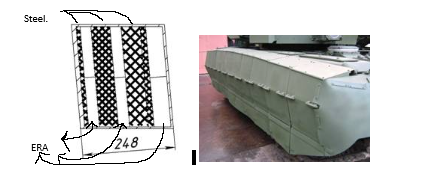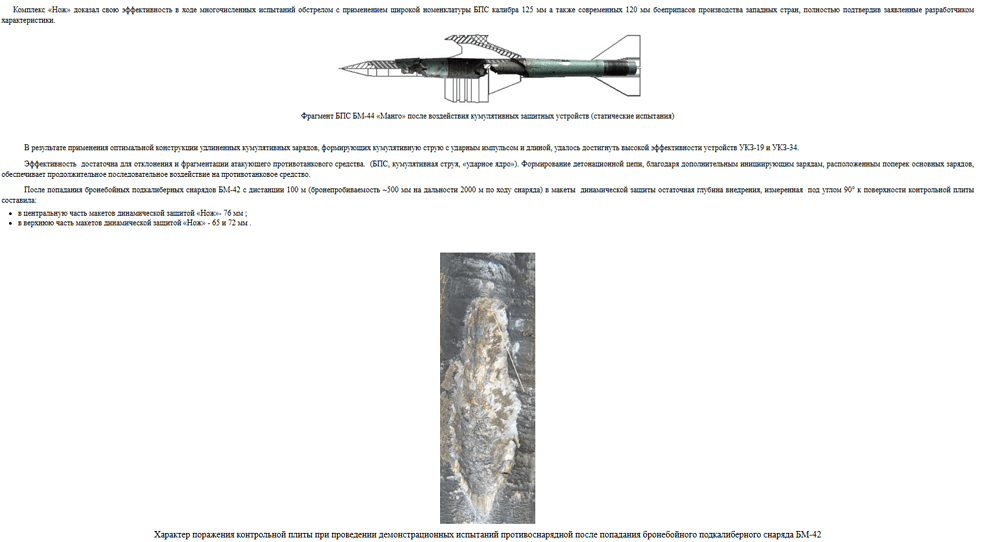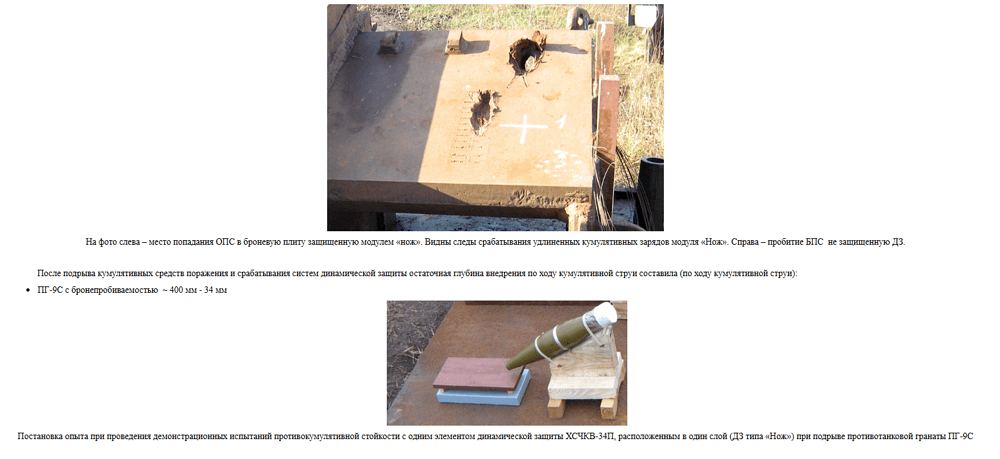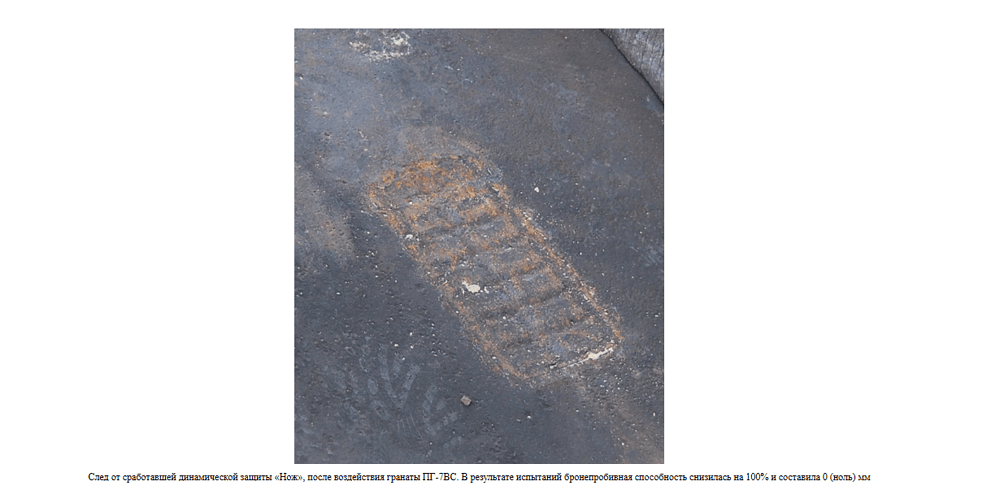This document is based on open-source technical data (specifically, materials from btvt.info) and the results of field and combat tests of the “Duplet”/“Nozh” Explosive Reactive Armor (ERA) system.
I. Fundamental Advantage of the “Nozh” and “Duplet” Dynamic Protection Systems
The “Nozh” (KhSCHKV) ERA is a modular element serving as the key active component of the “Duplet” complex. “Duplet” is a tandem, multi-layered (2-3 layers) system officially adopted by the Ukrainian Armed Forces in July 2009.
A. The Revolutionary Operating Principle
Unlike 2nd-generation ERA (such as “Kontakt-5” or “Relikt”), which rely on the principle of plate expulsion (largely ineffective against modern APFSDS), “Nozh” operates on the principle of a cumulative counter-explosion.
- Upon initiation, directed cumulative jets are generated, striking the approaching APFSDS rod or HEAT jet laterally.
- This action leads to the destabilization, fragmentation, and complete destruction of the projectile core.
B. Effectiveness Table (Comparison with Analogues)
The technical level of the “Duplet” ERA significantly surpasses Russian analogues, particularly against kinetic and tandem threats:
| Threat Type | “Duplet” (Ukraine) | “Nozh” (Ukraine) | “Relikt” (Russia) | “Kontakt-5” (Russia) |
|---|---|---|---|---|
| Non-Tandem HEAT | 95% | 90% | 60% | 60% |
| Tandem HEAT | 95% | 45% | 25% | < 5% |
| APFSDS (Kinetic) | 95% | 80% | 50% | 20% |
A. Tests Against Kinetic Rounds (APFSDS)
The “Nozh” system (using UKZ-19 and UKZ-34 devices) achieves high effectiveness by generating a cumulative jet with momentum and significant length. This allows it to deflect and fragment the attacking projectile (APFSDS, shaped charge jet, or “explosively formed penetrator”).
Specific Test Results with 3BM42 “Mango” APFSDS:
Tests were conducted using the 3BM42 APFSDS (rated penetration ~500 mm) at a distance of 100 m.
The residual depth of penetration into the control plates protected by the “Nozh” ERA was:
- In the central part: 76 mm.
- In the upper part: 65 mm and 72 mm.
CONCLUSION: The residual depth of penetration is only 65–76 mm. The “Duplet” ERA reduced the penetration capability of the 500 mm penetrating round by more than 5 times.
“In the photo, the left side shows the impact point of an APFSDS round on an armor plate protected by a ‘Nozh’ module. Traces of the activation of the ‘Nozh’ module’s elongated shaped charges are visible. The right side shows the penetration made by an APFSDS round on an area not protected by ERA (Explosive Reactive Armor).”
(Impact characteristics on the plate after being hit by 3BM42 APFSDS, with visible traces of the “Nozh” ERA activation)
B. Tests of the “Nozh” Dynamic Protection System (Against Shaped Charges)
Against Non-Tandem PG-9S Grenade (Penetration ~400 mm):
After the detonation of the PG-9S shaped charge, the final depth of penetration of the cumulative jet was only 34 mm.
The experiment was conducted with a single KhSCHKV-34P element (a single layer of “Nozh”-type ERA).

!
(Result after the detonation of the PG-9S anti-tank grenade)
Against PG-7VS Grenade:
As a result of the PG-7VS grenade impact, the armor penetration capability was reduced by 100% and measured 0 (zero) mm.
[ Знімок екрана 2025-09-28 095519.jpg ]
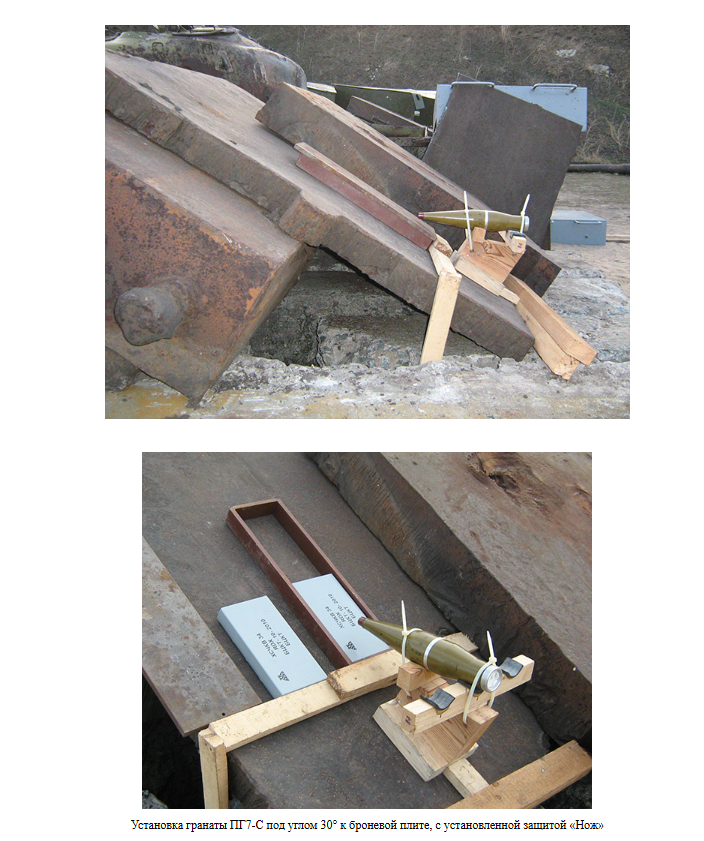
(Setup of the PG-7S grenade at a 30∘ angle to the armor plate with “Nozh” protection)
***[size=4][center]
Against OFL F1 APFSDS (600+ mm Penetration):
Along with providing protection against tandem High-Explosive Anti-Tank (HEAT) warheads, the complex demonstrates increased effectiveness against Armour-Piercing Fin-Stabilized Discarding Sabot (APFSDS) rounds. The tandem Explosive Reactive Armor (ERA) ‘Duplet’ provides protection against 120 mm and 125 mm APFSDS rounds fired from minimal distances.
This effectiveness is confirmed by trials conducted in the United Arab Emirates in 2003. The firing was carried out by a ‘Leclerc’ tank using the OFL 120F1 APFSDS round (analogous to the DM43).
As a result of the tests to determine the actual penetration capability of the 120 mm OFL 120F1 APFSDS, it was established that the penetration capability is in the range of 600 to 650 mm, which ensures the defeat of modern tanks when attacking from the frontal projection.
As a result of the ‘Duplet’ trials, the armor penetration capability was reduced by 100% and was 0 mm in all experiments. During the tests, armor damage was observed only as a deflection (bulge) of the armor plate by 15 to 20 mm. No cracks or fractures were found. The armor deflection was solely due to the kinetic energy of the projectile.
Based on the results of the 120 mm OFL F1 APFSDS trials, it can be stated that protection is ensured against rounds of similar design, such as the M829A2, M829A3, and DM53 developed in the USA and Germany.
By its level of protection against APFSDS, the tandem ‘Duplet’ ERA surpasses all existing global analogues. For example, the currently most advanced Russian ERA, ‘Relikt’, provides protection against the M829A2 APFSDS only at a distance of over 1 km, which does not meet modern requirements, and the ERAWA-2 ERA developed in Poland does not provide protection even against obsolete DM33 APFSDS rounds.
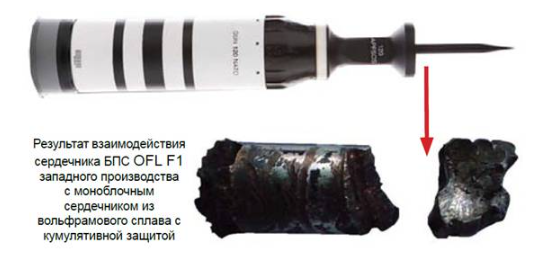
This is what remains of the projectile/round.
C. Incorrect Upper Frontal Hull (UFP) Design
- Actual Composition: The multi-layered UFP composition has a thickness of 820 mm along the path of the projectile, of which 472 mm is the steel equivalent excluding the ERA. The actual composition includes: 16 steel + 50 air + 1 KhSCHKV 34 + 45 air + 1 KhSCHKV 34 + 60 steel + 35 fiberglass + 50 steel (at 68 degrees).
- Modeling Issue: Screenshots of the in-game model indicate that key components, such as the 35 mm fiberglass and the 50 mm steel inner layer, are either missing or modeled with incorrect thicknesses/positions, significantly reducing overall protection. **** *
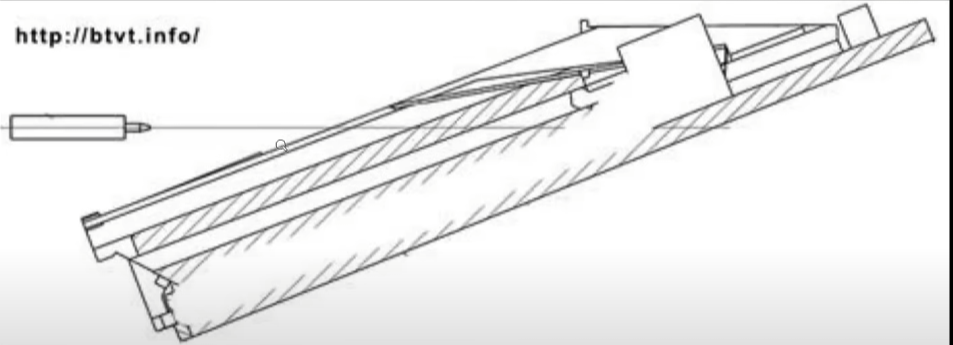
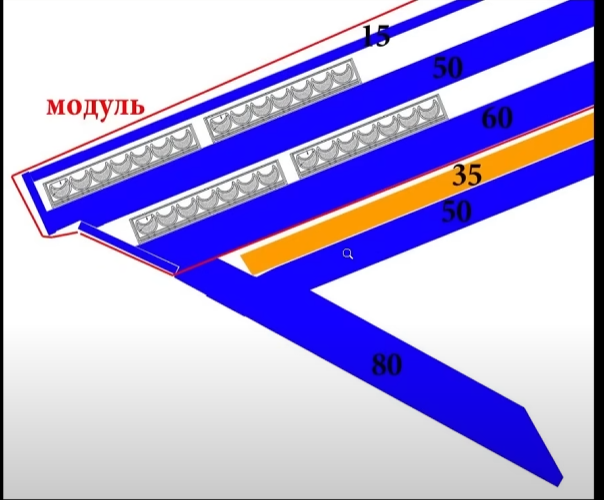
 T-80UD on the left, and BM Oplot on the right.
T-80UD on the left, and BM Oplot on the right.
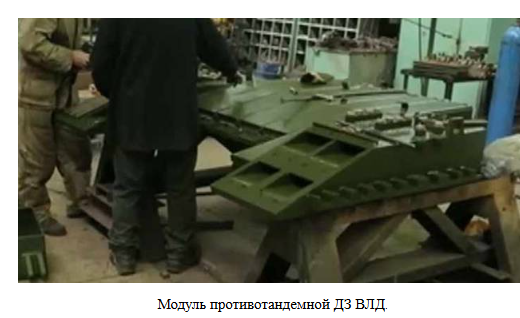
(Technical schematic of the UFP)*
D. Side Armor Deficiencies
1* Underestimated Base Thickness: The base side armor thickness of the hull (behind the turret ring) should be 80 mm, while the in-game model often indicates 70 mm.
2* Incomplete ERA Coverage: The side skirts, equipped with “Duplet,” must fully cover the ammunition carousel area. In the model, protection is often missing on the final segment.
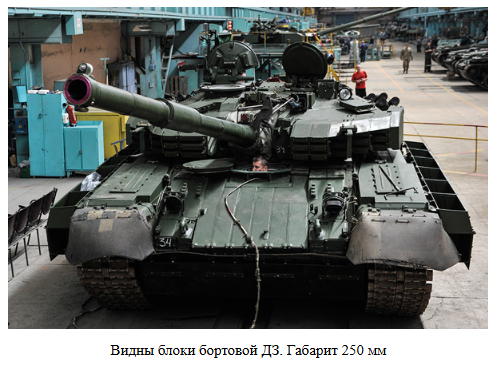
In the photo, at least 6 empty slots for the dynamic protection (ERA) are visible.
Analysis of the Side ERA Module Structure (BM “Oplot”)
Interpretation of Module Components
My analysis of the module’s structure is as follows:
- Layers: I believe the module is configured with 3 active ERA layers (the “Duplet” component) and 3 corresponding passive layers of steel (spacers/plates) to maximize protection against successive hits.
- Visual Identification:
- The hatched areas (заштриховане) represent the passive steel plates or spacers.
- The white/empty spaces (пусте місце) represent the active ERA elements (KhSCHKV “Nozh” charges), or perhaps the air gap necessary for the charges to operate effectively. (Note: This interpretation of “empty” as ERA is my best guess, and the order might be reversed in the actual design.)
Estimated Passive Steel Thickness
Based on this multi-layered interpretation and considering the known dimensions of similar tank armor components, my estimated total thickness of the passive steel plates within this module and the main hull is:
Estimated Total Steel≈80 mm+50 mm+20 mm≈150 mm
- I acknowledge that 80 mm is the thickness of the main hull side armor itself (behind the module), and the 50 mm and 20 mm are estimates for the thicknesses of the internal steel plates and container walls within the 248 mm module.
- I also recognize that I might be mistaken regarding the exact sequence in which these layers are placed (i.e., whether steel comes first, or the ERA).
This overall structure confirms that the side of the tank is protected by a substantial passive steel mass in addition to the powerful counter-explosive effect of the three-layered “Duplet” ERA.
